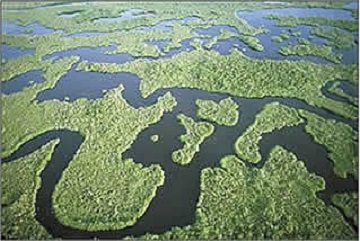590321-shared heritage.jpg

The Everglades in Florida is one of 50 World Heritage marine sites worldwide. Credit: National Park Service
Even if you live a thousand miles from the ocean, it still has an impact on your life. It provides food, fuel, and other resources. It’s a “superhighway” for transporting goods between countries. It provides jobs and attracts tourists. And it offers some of the most beautiful views on the planet. In short, it’s a critical resource -- and a common heritage -- for everyone on Earth.
A United Nations program is designed to preserve some of that heritage. It’s designated 50 World Heritage marine sites in 37 countries. They’re scattered across the whole planet.
To receive that designation, a site has to offer a unique ecosystem, a wide variety of life, special geological processes, or what the U.N. calls “incomparable” beauty. The list includes some sites that would be on just about anyone’s roster of outstanding ocean resources -- the Great Barrier Reef in Australia, for example, or the Galapagos Islands off the coast of South America. But it also includes lesser-known sites in such far-flung locales as Belize, Vietnam, Iceland, and Yemen. There are three sites in the United States: the Everglades in Florida, plus giant sites in Alaska and Hawaii.
In 2005, the U.N. added a management program to help keep the sites going. It keeps an eye on how countries protect the sites, studies how climate change is affecting them, and helps managers at different locations trade tips and ideas -- preserving some pieces of a shared heritage.

